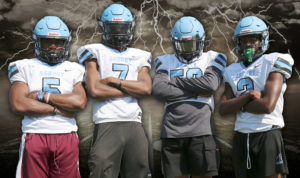Much of the analysis of the public education system in Newark feels unreliable; everyone, it seems, has an agenda. “New Jersey and local school officials have been involved in a conspiracy to evade laws governing the operation of charter schools in order to allow the wholesale “charterization” of public schools in Newark,” shouts Bob Braun. On the other side of the aisle, Bob Bowden alleges that New Jersey public education and, specifically, Newark’s traditional schools constitute “a multi-billion dollar cartel.” Ras Baraka demonizes Superintendent Cami Anderson and, on her coattails, emerges as mayor. Sen. Ron Rice goes to Washington to plead for federal intervention.
So it’s with relief that we turn to the 2015 edition of “Newark Kids Count,” an annual publication from an apolitical and reputable organization called “Advocates for the Children of New Jersey.” Finally, a level-headed analysis of the state of public education in Newark (as well as information on childrens’ health, poverty levels, family structures). Here’s a few highlights.
- Newark Public Schools graduation rate in 2010-2011: 61%
- Newark Public School graduation rate in 2013-2014: 69%
- Preschool enrollment: “. Newark saw a strong 12 percent increase in preschool enrollments from the 2009–10 to 2013–14 school years, compared to the Essex increase of 8 percent and the statewide increase of 4 percent.”
- Kindergarten enrollment, traditional and charter: “As kindergarten enrollment in Newark’s charter schools climbed 122 percent during this same time, enrollment in the city’s traditional public school kindergarten dropped 51 percent.
- Public school enrollment, traditional and charter: “From the 2009–10 to 2013–14 school years, total K-12 enrollment in Newark’s traditional public schools decreased 11 percent, while K-12 charter school enrollment more than doubled. Newark charter schools are now educating about 25 percent of all Newark students.”
- Special education enrollment, traditional and charter: “Newark’s charter schools are also educating an increasing number of students requiring special education, rising from about 300 students in 2009–10 to more than 1,000 in 2013–14. As a percent of total enrollment, however, Newark traditional schools still educate a higher percent of students with special education needs — 15 percent compared to about 9 percent in charter schools.”
- School climate: “From 2010–11 to 2013–14, more substance abuse and vandalism related incidents were reported to have occurred in Newark’s traditional public schools. During this time, incidents involving substance abuse increased 20 percent, but still represented the fewest number of incidents at 24. Vandalism rose 24 percent to a total of 83 incidents. Violent incidents declined 5 percent but were still the highest type of incidents reported at 165. Incidents involving weapons also declined slightly. In the 2013-14 school year, Newark charters recorded 71 incidents of violence, 13 incidents involving vandalism, 5 involving weapons and 15 incidents surroundings substance abuse. Data for previous years are unavailable.”
- Student outcomes, traditional: “Once again, trends in the percentage of students in the city’s traditional public schools posted mixed results. While passing rates rose from 2009–10 to 2013–14 on 3rd grade language arts tests, 8th grade math tests and 11th grade language arts and math tests, passing rates in other grades and subjects decreased. Newark traditional public school students posted the largest gain in the percentage of students passing 11th grade language arts tests, increasing 39 percent, from just 57 percent passing in 2009–10 to 80 percent in 2013–14. Their worst score was on 4th grade language arts, with just 29 percent of students testing proficient.”
- Student outcome, charters:“Newark charter school students continued to pass state standardized tests at a rate roughly equal to, and in many cases better than, statewide averages. Charter school students performed the best on 11th grade language arts tests, with 93 percent passing, and worst on 4th grade reading, with 58 percent passing.”
- Comparison of student outcomes between traditional and charter schools: “A substantial and persistent achievement gap exists in pass rates among students in Newark traditional public schools and charter schools. For example, while 71 percent of charter school students in Newark passed 3rd grade language arts tests in 2013–14 — higher than the state average of 66 percent — only 41 percent of students in Newark traditional public schools passed those tests. Similarly, just 42 percent of traditionals school students passed 8th grade math tests, compared to 75 percent for charter school students. Comparable trends can be seen throughout other grades and tests.”
Bottom line: charter schools in Newark are educating an increasing percentage of children with disabilities (the report doesn’t include percentages of English Language Learners, the subject of some anti-charter rhetoric) providing safer environments, and demonstrating higher academic gains for students.
That’s why there are 10,000 kids on waiting lists. How could it be different? Regardless of means, any parent wants the best school for his or her children. Families with wealth can exercise school choice by paying for private school or moving to a higher-achieving district. Families without wealth or mobility can exercise school choice by choosing a public alternative like a charter school.
Of course, that only works if there are quality charter school seats available. So it’s worth noting that yesterday the N.J. Department of Education released the results of its most recent charter school application process and, in the end, authorized the opening of a single school. Now that’s a bad trend.



1 Comment